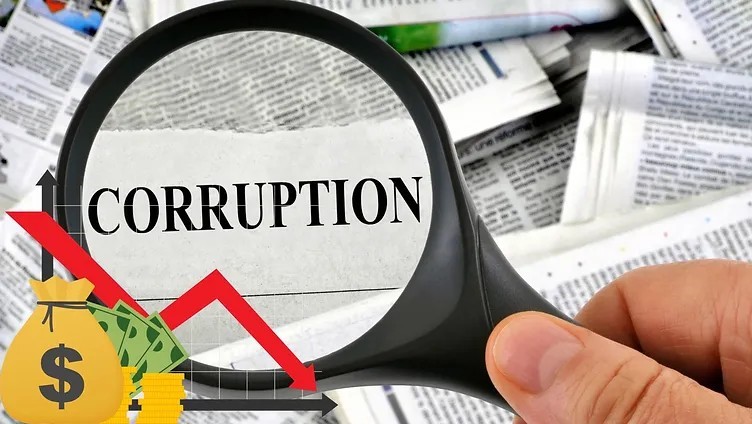India’s Corruption Perceptions Index 2024 Rank Drops to 96
Syllabus:
GS-2:
Transparency & Accountability , Government Policies & Interventions ,Important International Institutions
Focus:
India ranked 96th out of 180 countries in the Corruption Perceptions Index (CPI) 2024, with a score of 38, declining from 93rd place in 2023. This indicates worsening perceptions of public sector corruption, highlighting the need for stronger anti-corruption measures and governance reforms.
Understanding the Corruption Perceptions Index (CPI):
- Definition and Purpose:
- The CPI is an annual assessment by Transparency International that ranks countries based on perceived levels of public sector corruption.
- It utilizes a scale from 0 to 100, where 0 indicates high corruption and 100 signifies a corruption-free nation.
- Methodology:
- The index compiles data from expert assessments and opinion surveys to provide a comprehensive view of public sector corruption worldwide.
How Country Scores Are Calculated:
- A country’s CPI score is derived from at least 3 data sources out of 13 different corruption surveys and assessments.
- These data sources come from reputable institutions such as the World Bank and the World Economic Forum.
- CPI measures perceptions of corruption rather than absolute levels, as corruption is difficult to quantify.
- Countries are ranked on a 0-100 scale, where 0 = highly corrupt and 100 = very clean.
Significance of CPI Rankings:
- CPI is the leading global indicator for public sector corruption.
- It provides a comprehensive picture by combining various aspects of corruption into one globally comparable ranking.
- The calculation process is regularly reviewed to ensure robustness and accuracy.
- The index helps governments, policymakers, and businesses understand corruption risks and implement anti-corruption measures.
India’s Performance in 2024:
- Current Ranking and Score:
- In the 2024 CPI, India ranks 96th out of 180 countries, with a score of 38.
- Comparison to Previous Years:
- 2023: Ranked 93rd with a score of 39.
- 2022: Ranked 85th with a score of 40.
- Trend Analysis:
- Over the past few years, India’s score has declined, indicating a rise in perceived public sector corruption.
Regional Comparison:
- Neighboring Countries:
- Pakistan: Ranked 135th.
- Sri Lanka: Ranked 121st.
- Bangladesh: Ranked 149th.
- China: Ranked 76th.
- Analysis:
- Among its neighbors, India performs better than Pakistan, Sri Lanka, and Bangladesh but lags behind China in perceived corruption levels.
Global Context:
- Top Performers (Least Corrupt Nations):
- Denmark: Ranked 1st as the least corrupt
- Finland: Ranked 2nd.
- Singapore: Ranked 3rd.
- Global Trends:
- Since 2012, 32 countries have significantly reduced corruption.
- However, 148 countries have either stagnated or worsened.
- The global average score remains at 43, with over two-thirds of countries scoring below 50, indicating widespread corruption issues.
Implications and Recommendations:
- Impact on Climate Action:
- Corruption hinders climate action, delaying emission reduction efforts and adaptation measures.
- Mismanagement of climate funds negatively impacts vulnerable populations.
- Call to Action:
- Urgent need to strengthen anti-corruption measures in India and globally.
- Transparent governance practices are essential to combat corruption
- Protecting climate-related funds from misuse will enhance the effectiveness of environmental policies.
Challenges and Way Forward for Tackling Corruption:
Challenges:
- Lack of Strong Enforcement: Weak implementation of anti-corruption laws leads to impunity for corrupt officials.
- Political Influence: Corruption often exists at high political levels, making it difficult to enforce accountability.
- Judicial Delays: Slow legal processes and backlogged courts reduce the effectiveness of anti-corruption measures.
- Weak Whistleblower Protection: Fear of retaliation discourages whistleblowers from exposing corruption.
- Opaque Political Funding: Unregulated campaign financing leads to undue corporate and political influence.
- Low Public Awareness: Many citizens lack awareness of their rights and available anti-corruption mechanisms.
- Bureaucratic Red Tape: Complex regulations and excessive paperwork create opportunities for bribery.
- Limited International Cooperation: Cross-border corruption is difficult to track without strong global collaboration.
Way Forward:
- Strengthening Institutions: Establish independent anti-corruption bodies with legal authority and autonomy.
- Judicial Reforms: Ensure faster trials and strict penalties for corruption-related cases.
- Transparency in Political Funding: Implement strict regulations on campaign financing and corporate donations.
- Whistleblower Protection: Strengthen legal safeguards and provide incentives for reporting corruption.
- Technology Integration: Use AI, blockchain, and digital governance to reduce manual corruption opportunities.
- Public Awareness Campaigns: Educate citizens on anti-corruption laws and how to report incidents.
- International Collaboration: Strengthen global anti-corruption frameworks and cross-border enforcement
- Simplifying Bureaucracy: Reduce red tape and digitize processes to minimize bribery opportunities.
Conclusion:
India’s declining rank in the Corruption Perceptions Index highlights the urgent need for comprehensive anti-corruption reforms. Addressing governance challenges is crucial for restoring public trust, improving transparency, and ensuring sustainable development.
Source: Business Standard
Mains Practice Question:
Discuss the factors contributing to India’s declining rank in the Corruption Perceptions Index and suggest measures to enhance transparency and reduce public sector corruption.




